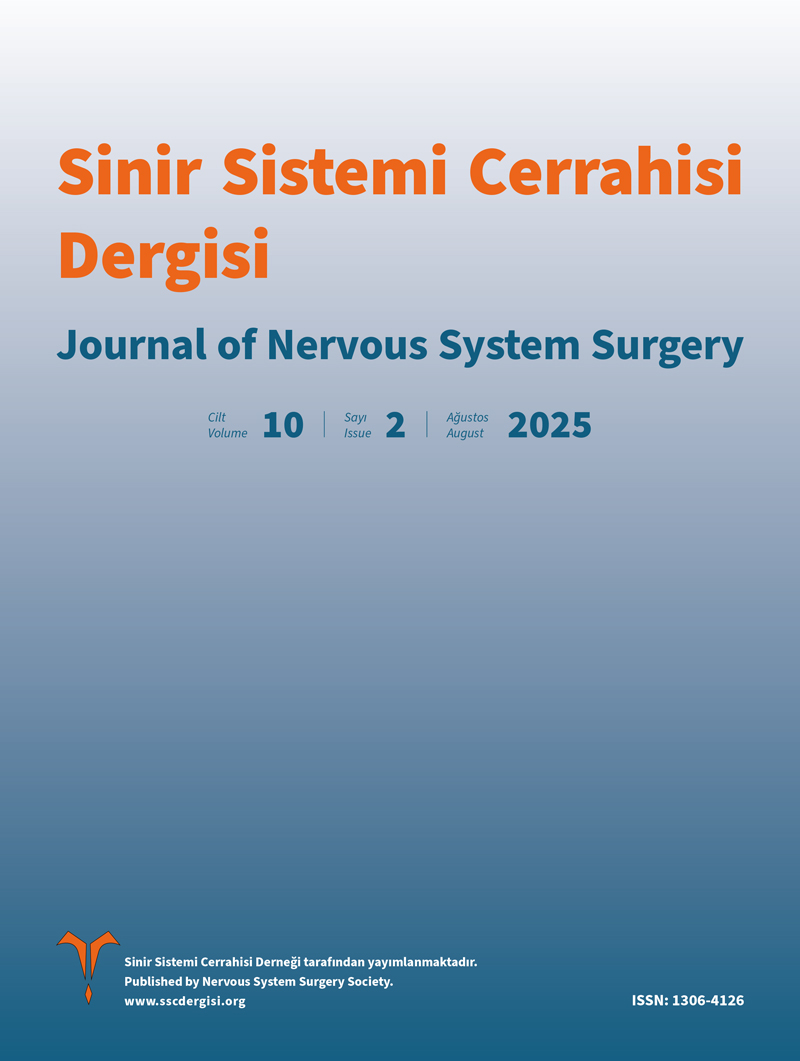Abstract
Introduction: Tethered spinal cord syndrome is a spinal cord malformation which causes neurological, urological and orthopaedic symptoms. This is due to the conus medullaris ending lower than normal. It is most commonly seen in children. Although studies have shown that intraoperative neuromonitoring (IN) reduces potential complications and provides safer surgery, its use remains controversial. In this study, we retrospectively evaluated the use of IN in patients who underwent surgery at our clinic.
Methods: The use of IN was examined in 31 patients operated on in our clinic between 2016 and 2023. Their age, gender, symptoms and preoperative neurological examinations were examined. While IN was used during surgery for 15 patients, it was not used for the remaining 16 patients. The neurological findings of the patients were evaluated after surgery.
Results: While a post-operative deficit was observed in one patient who did not use intra-nasal (IN) medication after surgery, no additional neurological deficits were observed in the other 30 patients after surgery.
Conclusions: Although the use of IN is recommended in the literature for patients with tethered spinal cord syndrome to prevent legal problems and reduce complications, based on the experience of the surgery centre, it was observed that not using IN did not affect the rate of post-operative complications.
Keywords: Gergin Omuriilik sendromu, intraoperatif nöromonitörizasyon, konus medullaris
References
- Pusat S, Kural C, Solmaz I, et al. Comparison of Electrophysiological Outcomes of Tethered Cord Syndrome and Spinal Intradural Tumors: A Retrospective Clinical Study. Turk Neurosurg 2017; 27: 797-803. https://doi.org/10.5137/1019-5149.JTN.17043-16.0
- Telfeian AE, Punsoni M, Hofstetter CP. Minimally invasive endoscopic spinal cord untethering: case report. J Spine Surg 2017; 3: 278-282. https://doi.org/10.21037/jss.2017.06.10
- Kang HS, Wang KC, Kim KM, Kim SK, Cho BK. Prognostic factors affecting urologic outcome after untethering surgery for lumbosacral lipoma. Childs Nerv Syst 2006; 22: 1111-1121. https://doi.org/10.1007/s00381-006-0088-5
- Lalgudi Srinivasan H, Valdes-Barrera P, Agur A, et al. Filum terminale lipomas-the role of intraoperative neuromonitoring. Childs Nerv Syst 2021; 37: 931-939. https://doi.org/10.1007/s00381-020-04856-4
Copyright and license
Copyright © 2025 The Author(s). This is an open access article distributed under the Creative Commons Attribution License (CC BY), which permits unrestricted use, distribution, and reproduction in any medium or format, provided the original work is properly cited.






